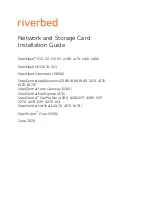
6-9
Catalyst 2900 Series XL and Catalyst 3500 Series XL Software Configuration Guide
78-6511-05
Chapter 6 Configuring the System
Changing IP Information
If your network devices require connectivity with devices in networks for which
you do not control name assignment, you can assign device names that uniquely
identify your devices within the entire internetwork. The Internet’s global naming
scheme, the DNS, accomplishes this task. This service is enabled by default.
The switch uses the DNS server to resolve the TFTP server name to a TFTP server
IP address. You must configure the TFTP server name-to-IP address map on the
DNS server. The TFTP server contains the configuration files for the switch.
You must configure the IP addresses of the DNS servers in the lease database of
the DHCP server from where the DHCP replies will retrieve them. You can enter
up to two DNS server IP addresses in the lease database.
The DNS server can be on the same or a different LAN as the switch. If it is on a
different LAN, the switch must be able to access it through a relay device or
router. For more information, see the
“Configuring the Relay Device” section on
page 6-9
.
For CLI procedures, refer to the Cisco IOS Release 12.0 documentation on
Cisco.com for additional information and CLI procedures.
Configuring the Relay Device
You need to use a relay device if the DHCP, DNS, or TFTP servers are on a
different LAN than the switch. You must configure this relay device to forward
received broadcast packets on an interface to the destination host. This
configuration ensures that broadcasts from the DHCP client can reach the DHCP,
DNS, and TFTP servers and that broadcasts from the servers can reach the DHCP
client.
If the relay device is a Cisco router, you enable IP routing (ip routing global
configuration command) and configure it with helper addresses by using the ip
helper-address interface configuration command.
For example, in
Figure 6-2
, you configure the router interfaces as follows:
On interface 10.0.0.2:
router(config-if)# ip helper-address 20.0.0.2
router(config-if)# ip helper-address 20.0.0.3
router(config-if)# ip helper-address 20.0.0.4
On interface 20.0.0.1
router(config-if)# ip helper-address 10.0.0.1
















































